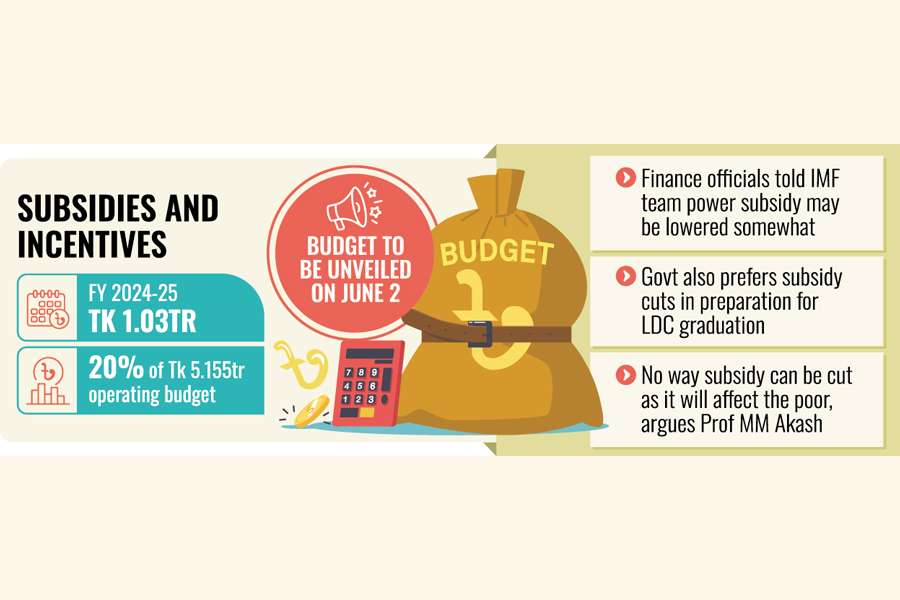Walking a tightrope in new budget making
Government may go frugal on incentive, subsidy handouts
Export incentives likely to squeeze a bit further in FY26

Published :
Updated :

Finance authorities may go frugal on subsidy and incentive handouts in the new budget as the interim government walks a tightrope in making two ends meet in current domestic and global economic realities.
Officials say as the government is calculating a smaller outlay for the 2025-26 budget, slated for announcement on June 2, exporters also may see export-performance incentives squeeze a bit, as of the past.
In the outgoing fiscal budget, the total allocation for subsidies and incentives was Tk 1.03 trillion, which is 20 per cent of the total operating budget of Tk 5.155 trillion.
Finance Division officials say in the next budget the government may allocate a similar amount under the head of subsidies and incentives, although the development-financier IMF twists arm of policymakers for bundling out subsidies in particular.
They say though the ministries like agriculture and food have sought increased allocations to meet subsidy needs, "there is no possibility of an increase".
In the current budget for the outgoing fiscal year 2024-25, the allocation for subsidy was Tk 710 billion which went up to Tk 900 billion in the revised budget.
Sources have said allocation for power subsidy would not increase in the next budget, rather the finance officials told a team of the International Monetary Fund (IMF) that the subsidy allocation for the sector might be lowered to some extent.
The ministry of agriculture has sought Tk 250 billion as subsidy in the next fiscal year to cover additional expenses, particularly in fertiliser prices, due to dollar-price hike. There is an allocation of Tk 170 billion in the current budget for agriculture subsidy.
However, the Finance Division officials say, the possibility of increasing farm-sector subsidy allocation for agriculture in the forthcoming budget is minimal.
A senior finance official involved in budget preparation says there is immense pressure from the IMF not to enhance spending for doling out subsidies and incentives in the budget now on the anvil.
"Revenue-earning trend also does not permit increase in budgetary spending, so no option to raise allocations for subsidies and incentives," he says.
Another finance official says though the government is keeping the budgetary allocations for subsidies and incentives for next fiscal year similar to that in the current budget, an additional allocation also may be needed while revising budget in the next year.
However, he says, spending on incentives for export-oriented sectors may decrease in the next fiscal year as the government has plans to lower cash incentives next year too, keeping in mind the preparation for graduation from the club of world's least-developed countries or LDCs.
On the very first day of the current fiscal year, the government had cut cash incentives to the range of 0.3 per cent to 10 per cent for various products from 1.0 per cent and 15 per cent in the previous fiscal year. Earlier, the cash incentives were as high as 20 per cent for some products.
M M Akash, professor of Economics at the University of Dhaka, told the FE if allocation remained same or lowered to some extent, the government has to keep in mind who to be affected from the action.
He thinks in no way subsidy can be cut which will affect the poor segments of people.
"If we don't have capacity to provide subsidy or if we need to cut subsidy, it should be started from the richer group of people," says Mr Akash.
syful-islam@outlook.com


 For all latest news, follow The Financial Express Google News channel.
For all latest news, follow The Financial Express Google News channel.